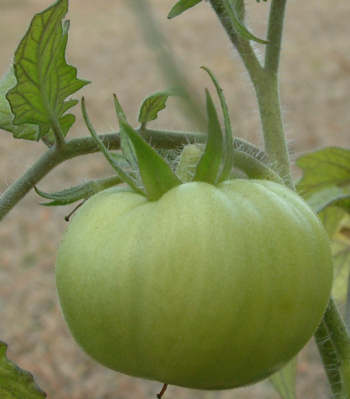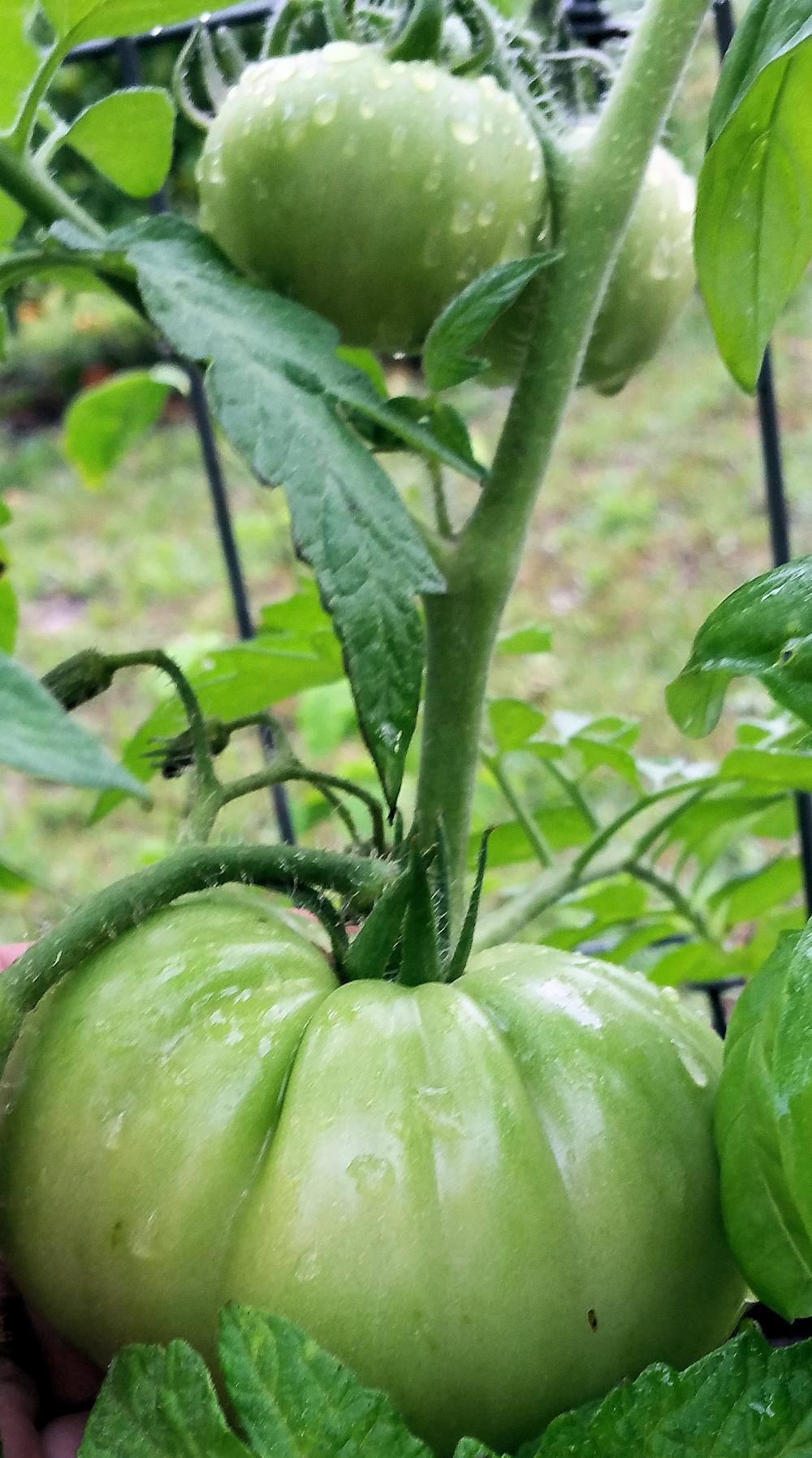south florida tomatoes
Tomato Varieties for the Southeast
Tomato varieties for the Southeastern USA are pretty wide-open for most locations, but there are certain considerations. I thought I’d start some posts about tomato varieties well-suited for different locations around the USA. And this, my first post, is on the Southeastern USA.
What is the South East?
Well, here are the boundaries I’m considering the Southeast:
- South of Virginia on the eastern seaboard
- East of Texas
- South of Kentucky in the middle part of the USA.
- I’ll include Arkansas, but exclude Missouri.
So now that we know the boundaries, what tomato varieties are good for this area? Let’s consider the two things common to Summer in most of these locations.
Heat. Humidity.
While a little of both are great for growing tomatoes, too much of a good thing spells bad news for your eventual fruits. So what kind of problems do the heat and humidity cause in the Southeastern USA?
Yikes! There’s a Fungus Among Us!
Unfortunately, fungus thrives in humid locations without good air circulation. Diseases related to fungal infections include alternaria, blights, gray leaf spot, fusarium wilt, damping off, verticillium wilt, mold….you get the idea.
If you are finding a lot of fungal infections in your plants, you’ll want to at least think about some hybrid tomato varieties that are more resistant to these problems. You’ll recognize them by the letters after the tomato name; they include:
- A – alternaria
- F – fusarium wilt strain I
- FF – fusarium wilt strain I & II
- V – verticillium wilt
So for example, if you look at the description for the tomato variety called Big Beef, you’ll see the letters VF1F2TNA, which means the tomato is resistant to alternaria, both strain 1 and 2 of fusarium wilt, verticillium wilt, tobacco mosaic virus (the “T”) and nematodes (the “N”).
Other hybrid tomato varieties with good fungal resistance include:
- Applause (ASCF1F2StV)
- Celebrity (VF1F2NTASt)Â (one of my favorite hybrids)
- Country Taste (F1F2TV)
- Fabulous (VF1F2TASt)
- Razzleberry (VF1F2)
So this gives you an idea of what to look at when evaluating one of the tomato hybrids. (In addition to taste, of course.)
Other Tomato Diseases
Unfortunately, fungal diseases aren’t the only ones to threaten our homegrown tomatoes. We also have to worry about bacterial diseases (bacterial speck, spot, wilk, canker, fruit rot, etc.). And if that wasn’t bad enough, we have nematodes and viral diseases. It’s a wonder that we have any tomatoes at all!
The chances of bacterial diseases can be greatly reduced by careful mulching, as it’s the bacteria in the soil that causes problems. Nematodes…well, if you have them in the soil, the best thoughts would be to either plant your tomatoes in containers (using potting soil) and/or plant hybrids that are resistant to nematodes. Viral diseases can also be present – yikes!
(You may want to read the post on tomato diseases to become more familiar with these banes to growing tomatoes.)
What About Heirloom Tomatoes?
Sure, you can grow heirlooms! Just keep in mind that because they since they don’t have all those extra letters after their name, you’ll not know right off the bat what kind of resistance a variety has. You’ll need to be more on the lookout for any problems. Make sure your plants have plenty of air circulation (without being too windy), mulch the soil and consider growing in containers if you have a problem with nematodes. Oh, and don’t splash water on the plants when watering.
If you live in a location where it’s hot but not necessarily humid, you have more wiggle room in the summer. But of it’s really hot, you’ll want to pick tomato varieties that set fruits when many days go well over 90 degrees. The big beefsteaks are usually a little more trouble in this respect, compared to the tomatoes which grow to be less than 8 ounces.
Heirlooms that seem to do well in the southeast heat and humidity are:
- Cherokee Purple
- Black Krim
- Black Prince
- Bradley
- Clear Pink Early
- Matina
- Just about any cherry tomato
Where I live in South Florida, I try to grow most of my heirloom tomatoes on the “shoulders” of the season. In other words, I do my best to avoid having the fruit trying to set between mid-July and mid-August, when it’s the hottest. This may mean starting the seeds earlier than normal so I can get the seedling plants outside at the first possible moment.
Growing Tomatoes in Florida
Growing tomatoes in Florida, especially in South Florida, is something that I have a great deal of experience with. So, for all you Florida gardeners, here are some tips for growing some luscious, vine-ripe tomatoes of your own!
(South Florida gardeners — here are some special tips for you.)
Seasons for Growing Tomatoes in Florida – Winter
Here in South Florida, you can grow tomatoes practically year-round…with some caveats. One is that if you have ever had a frost during the winter, don’t grow a large tomato garden in winter, unless you are prepared to cover your tomato plants or you have them in containers and can bring them inside.
Here’s a sad but true story. One year I planted a gorgeous tomato garden, with at least a dozen plants (probably closer to two dozen). It had been a cool, but not cold, Winter, with sunny days. Beautiful growing weather!
Alas, one night it was expected to get down to around 40 degrees. I debated covering the plants, but figured they would be OK. They probably would have been if the temperature had stayed around 40. Unfortunately, they plunged to the low 30s, we got frost and my tomato plants died. What made it worse was that they were bearing a wonderful crop at this point! I was able to salvage some of the ripest (although still green) tomatoes, but lost most of the crop.
If you want to grow a Winter crop in South Florida, plant your seeds in September. I like to plant heirloom tomato seeds in the winter, as well as at least one variety of cherry tomato like Supersweet 100 hybrid
Spring Tomatoes
Spring is great in Central and South Florida. Generally mild with mostly sunny days, it’s a wonderful tomato-growing time. North Florida can still get chilly, though, so plan accordingly if you live in the Panhandle or around Gainesville and north.
Spring is the end of the Florida dry season, so remember to water accordingly, as the sun is getting stronger each day. Especially in South and interior Central Florida, it can get mighty hot in late Spring.
To harvest a Spring crop of vine-ripe tomatoes, start planting your seeds in December to late January. I usually plant a mix of heirloom tomato seeds, as well as hybrids. Some of my favorites include Cherokee Purple, Black Prince, Red Pear, Kellogg’s Breakfast, Celebrity, Better Bush and Supersweet 100.
Growing Tomatoes in Summer in Florida
For Florida in general, Summer can be brutal on your tomato plants. Nor only is the sun exceedingly strong, but it’s hot and humid — excellent conditions for mildew and gray spot to develop. I tend to not grow many tomatoes in Summer in Florida — I used to, but the heat and humidity just made it too difficult to get a good harvest.
Another problem you may run into in South and Central Florida is plants growing too fast and developing lots of cracks. So the tomato varieties I do grow are generally cherry- to medium-sized.
For Summer tomatoes, I sow seeds sometime in March.
Tomato Garden in Fall
Fall can be a nice time of year to grow tomatoes, at least in South Florida. If you live in North Florida and the Panhandle, you’ll want your main crop in for harvest by mid to late October. Central and South Florida can extend that a bit into November.
Fall’s main issue is how cold it gets how fast. Here in South Florida, we can get nighttime lows in the low 40s as early as November. I know this year, it’s been into the 20’s and 30’s in North Florida by late November — too cold for warmth-loving tomatoes. So the further north in Florida you live, the more you’ll want to consider growing your tomatoes in containers that you can bring inside when you get really cold snaps. Or — grow early tomatoes, so they ripen before the really cold weather hits.
For Fall, I like some of the cherry tomatoes and a bush type like Better Bush hybrid tomato
For a fall crop, I sow the seeds around mid-July.

